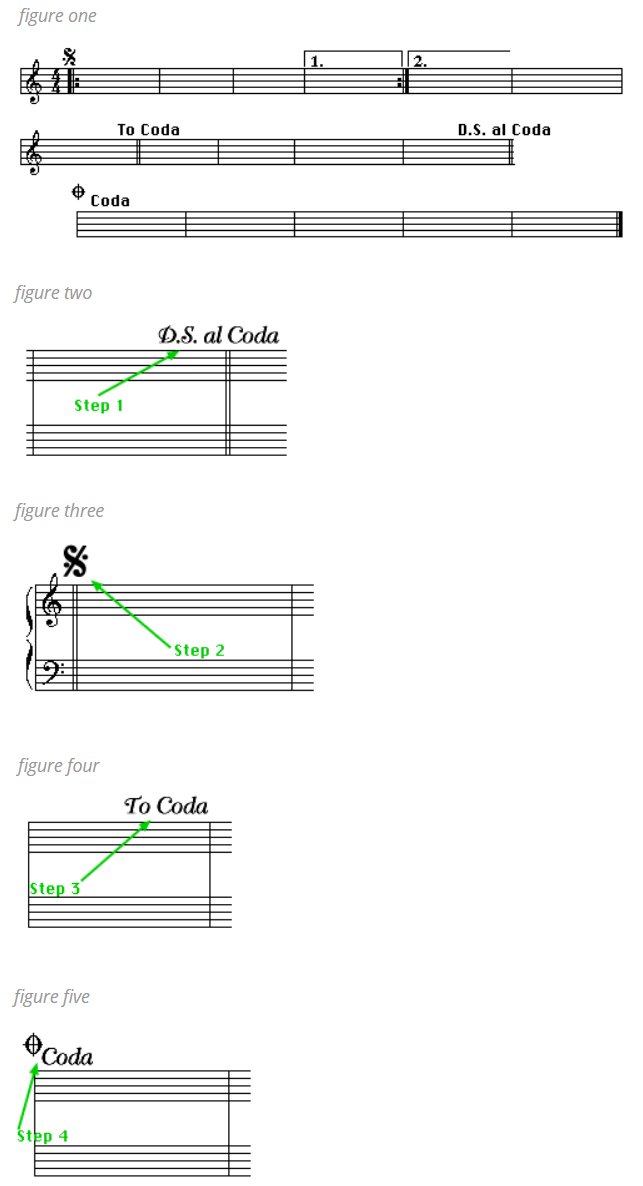More Chart Navigation
Step 1
In figure one displayed in the image for this section, a player would play through the entire song including the 1st and 2nd endings, until they see a notation on the staff that looks like figure two. This is the D.S. al Coda.
Step 2
When they reach the D.S. al Coda bar, they go back to the notation on the staff found earlier in the song, that looks like figure three and continue playing the song, including the 1st and 2nd endings, again. Figure three is the Sign.
Step 3
They continue playing the song from the Sign until they reach the notation on the staff that looks like figure four. This is the To Coda marking.
Step 4
When they reach the To Coda marking, they look for the last section of the song form, which will be marked with notation like figure five. This is the Coda. Then, they play the remainder of the song that is shown in the Coda section.
This space-saving method for endings and repeats can be confusing, but it will become easier as you become accustomed to using them. It is better to use this method than having to turn many more pages of music while trying to play a song.
In Lesson Five we will use what we have learned here and how to apply it even more for performance purposes. Good job! You have done well today. See you in Lesson Five . . .



